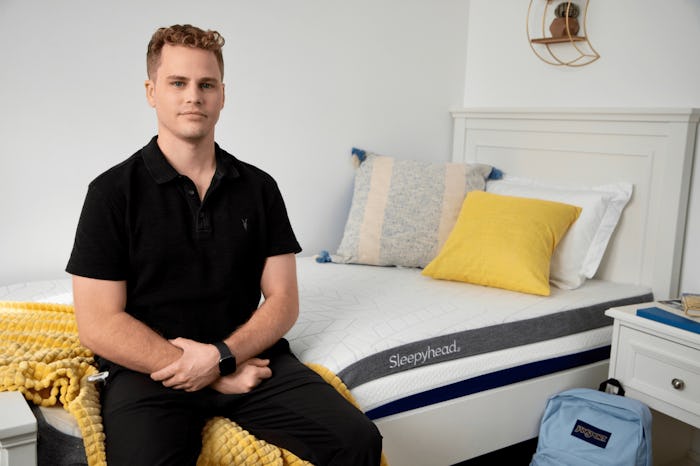Life

From Dorm Room Discomfort To Startup Success: How Steven Van Alen Built Sleepyhead
This college student mattress topper brand is thriving with its focus on quality and domestic production.
The difference between startups that achieve long-term success and those that either never gain traction or experience early rapid growth only to eventually burn out can be surprisingly simple. According to Paul Graham, iconic venture capitalist and co-founder of Y Combinator, most startups fail because the founders come up with an elegant solution to a problem that does not exist. Instead, however, startups that succeed in the long run typically start when the founder encounters a problem in their own lives, searches for a solution, finds none or finds the existing options to be inadequate, and then ultimately creates the solution themselves.
Steven Van Alen’s journey with founding Sleepyhead is paradigmatic of and rooted in this authentic approach to entrepreneurial problem solving. As a college student, Van Alen struggled with the uncomfortable, low-quality mattress provided by his university. Seeing his friends resort to unbranded, forgettable mattress toppers from major department stores and online retailers, Van Alen identified a lack of serviceable alternatives in the market. Inspired by this need and the explosion of new brands catering to the Gen Z audience, he realized that there was an opportunity to create a brand that resonated with college students. Van Alen entered a business competition at his university, won first place, and received $20,000 in seed funding. This victory solidified his belief in the viability of his idea and propelled him to pursue Sleepyhead full-time. Van Alen officially founded Sleepyhead in 2016.
Van Alen understood the needs and preferences of college students, naturally relating to his target demographic because he was a part of it. Unlike competitors who market to a broader audience, Sleepyhead’s focused approach — likened to crafting a tailor-made suit rather than an off-the-rack option — has especially resonated with college students.
“Our toppers are designed to make your bed at home feel less comfortable than your bed in the dorms. Crazy, huh? But that’s the feedback we get from moms when their students come back home for the summer or holidays — their dorm or apartment bed with a Sleepyhead topper is more comfortable and supportive than their home mattress,” Van Alen says.
Sleepyhead’s signature “Super Topper” combines both gel and copper nanotechnology and is encased in the CoolTech 2.0 washable cover with non-slip straps for the ultimate sleep experience. Additionally, Sleepyhead’s Gel Topper leverages the cooling properties of gel for a more restful night’s sleep, while the Copper Topper features 100% copper infusion for enhanced hygiene, wellness, and cooling benefits. All Sleepyhead Gel, Copper, and Super mattress toppers come in college-specific sizes like twin XL, have a good-till-graduation (5-year) warranties, and are paired with CoolTech washable covers, ensuring students have a clean and reliable product throughout their academic journey.
This attention to quality and detail has earned Sleepyhead a 5-star rating on their website and Amazon, reflecting a high level of customer satisfaction that is third-party validated.
It should come as no surprise that Sleepyhead has consistently shown above-average year-over-year growth. This is particularly notable given how many companies in the industry are facing flatlined sales or declines. Surviving for eight years in a competitive market is no small feat either, considering the toll the COVID-19 pandemic took on many businesses, especially college-facing ones.
Sleepyhead’s resilience and bright future are further bolstered by Shawn Nelson, the founder and CEO of Lovesac, who was the first investor in 2018 and continues to support the company. Moreover, throughout the last 12 months, Van Alen has bought out over half of the investors, aiming to own nearly 100% of the company. This strategy allows for a focus on sustainable growth rather than a “grow at all costs” mentality, which has troubled many other startups looking for capital in high-interest-rate environments.
To this point, Van Alen plans to lean into the brand’s domestic production as it is a significant differentiator in a market where many products are quickly copied and produced overseas. While Sleepyhead sources fabric covers from abroad due to the lack of fabric mills in the U.S., all aspects of Sleepyhead’s Super Topper production, including foam, assembly, and labor, are conducted domestically.
As far as future plans go, Sleepyhead remains focused on mattress toppers for now, but Van Alen and the team are considering expanding into complementary product categories in the future. Their goal is to build a legacy brand that maintains a strong connection with current and prospective college students and continues to innovate within its niche.
Reflecting on Sleepyhead’s growth, Van Alen is concentrating on the future: “We've come a long way, but this is just the beginning. Our goal is to continue innovating and expanding our product line. We want to ensure that every college student can experience the benefits of quality sleep.”
Despite balancing the demands of running a company, Van Alen’s youthful appearance stands as a cheeky testament to the restorative power of Sleepyhead’s products. Embodying the rejuvenation and vitality Sleepyhead promises, Van Alen is the perfect Sleepyhead case study.
By bringing the comfort of home into dorm rooms, Sleepyhead ensures students don’t just survive their college years — they thrive.
BDG Media newsroom and editorial staff were not involved in the creation of this content.